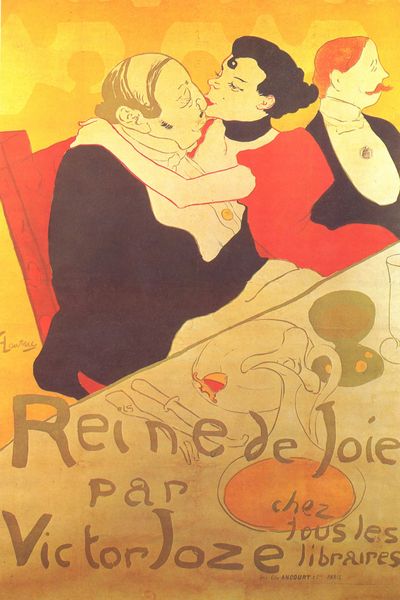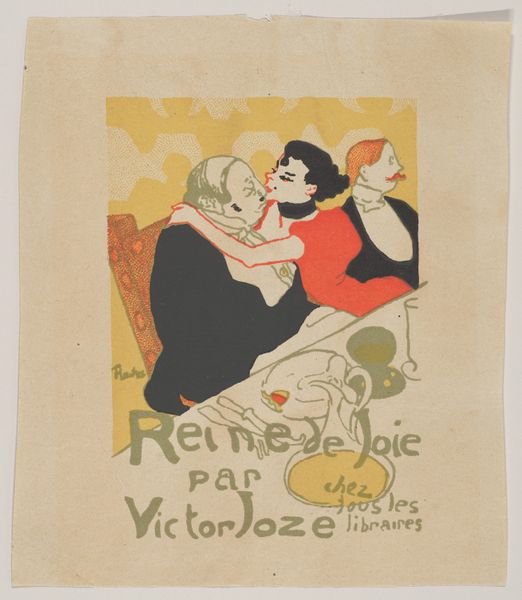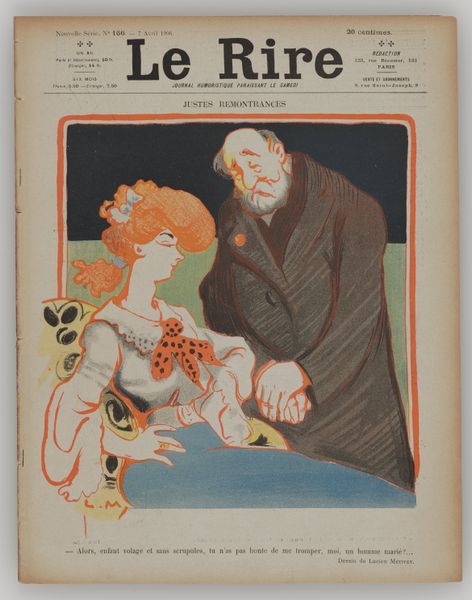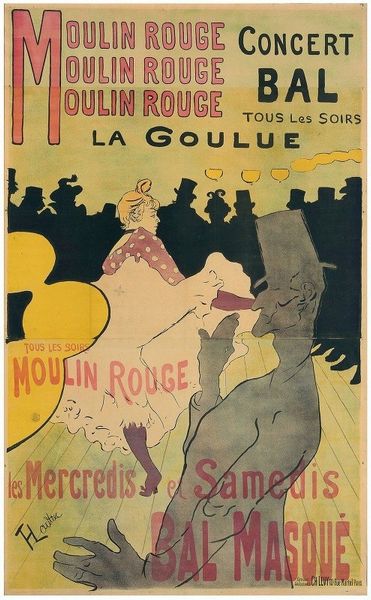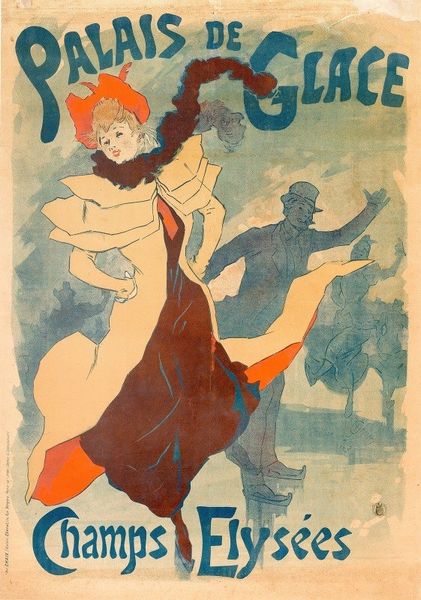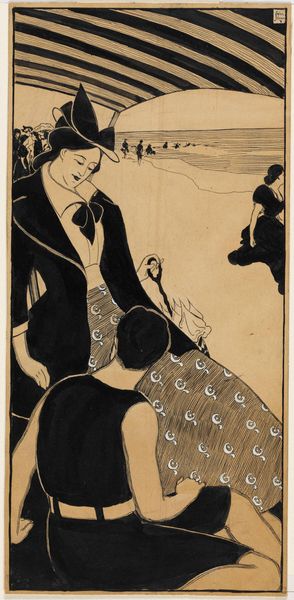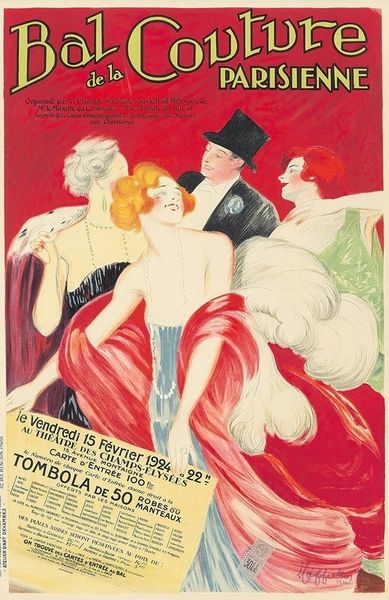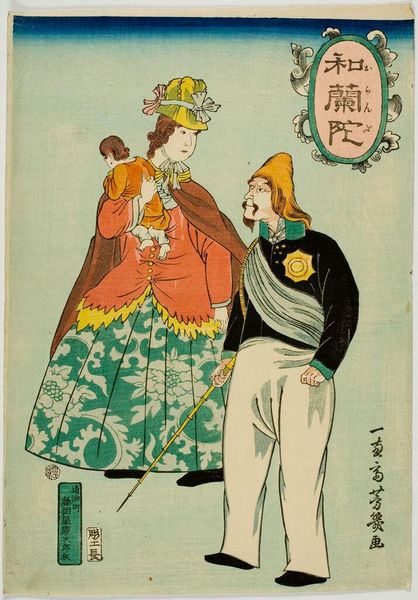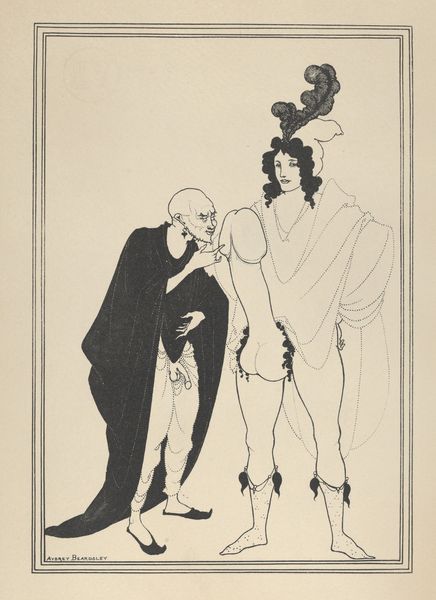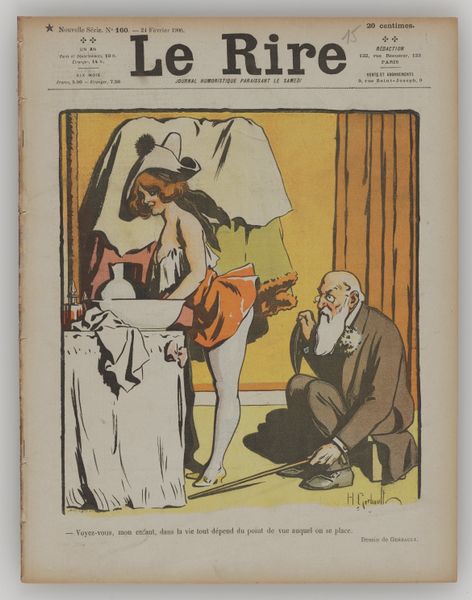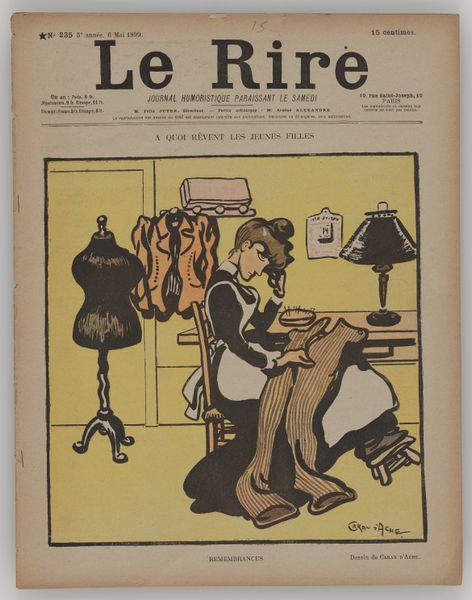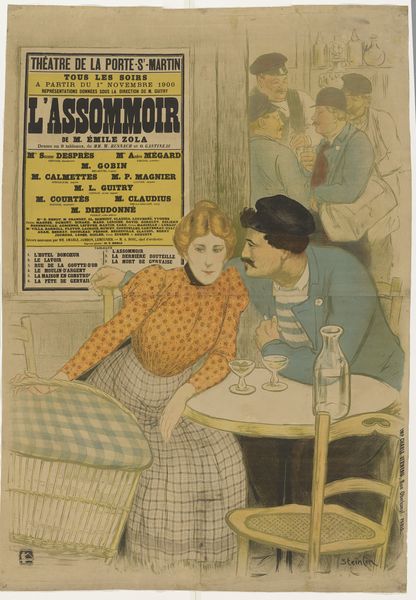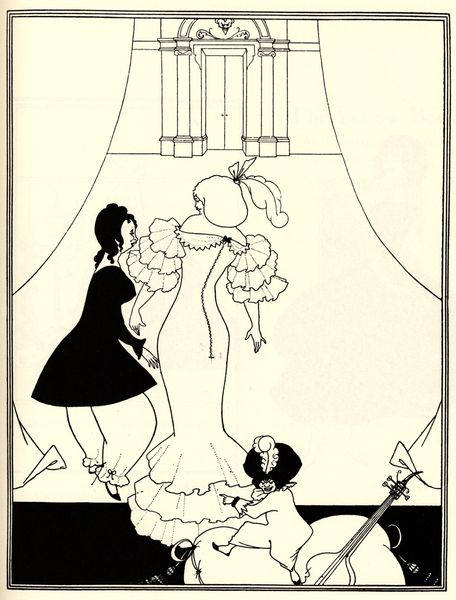
Dimensions: Sheet: 59 1/16 × 39 3/16 in. (150 × 99.5 cm)
Copyright: Public Domain
Curator: Oh, what a striking introduction to Toulouse-Lautrec’s “Reine De Joie” from 1892, currently held in the Met. The immediate feel is something akin to Parisian night blooming under the haze of gaslight, wouldn't you agree? Editor: Definitely striking! I am drawn to the materiality of this piece. As a lithograph, it would have been widely accessible as a commercial poster, and this piece definitely collapses any presumed high art versus low art dichotomy. Curator: Precisely, it dances between worlds! You get such a vivid sense of place and time. This wasn’t some removed, objective study; he lived and breathed this bohemian milieu of fin-de-siècle Paris. He found poetry in the everyday, the scandalous, the overlooked. The characters almost leap from the stone, and his affection—even tenderness—for his subjects is palpable, despite their obvious caricature. It feels, if you let it, remarkably intimate, capturing what most of us can only assume a great moment to be. Editor: Considering its origins as advertising for Victor Joze’s novel, one cannot underestimate the work and labour behind making these images widely visible. Lithography relies on a team and expertise—from stone preparation to printing—which highlights how industrial processes can shape artistic aesthetics as the goal here wasn't so much personal expression as it was mass consumption. Curator: Yes! That is really the foundation of much of this. These materials tell an essential part of this story. It’s a potent commentary on consumer culture emerging around the artistic avant-garde and becoming, essentially, this symbiotic feedback loop that fueled places like the Moulin Rouge and enabled talents such as Toulouse-Lautrec to thrive. It allowed them the means to create what they do. It's a love for the subject with what is made of that love being mass consumed by many. What better praise could one ask for? Editor: I find myself also wondering about the workforce producing these prints, especially how reproductive technologies like lithography impacted the accessibility of images. This allows so many different avenues to ponder over what exactly makes art what it is. Curator: Absolutely, a dance between art, accessibility, and industrialization all wrapped up in one fabulous print! It gets the head turning, and makes the person on the street interested in stopping to really admire the artist's mind, for a while at least. Editor: Agreed. Considering the lithographic production sheds light on how the means of production shape the art itself while reflecting the ever blurring line of consumerism within artistic expression.
Comments
No comments
Be the first to comment and join the conversation on the ultimate creative platform.
